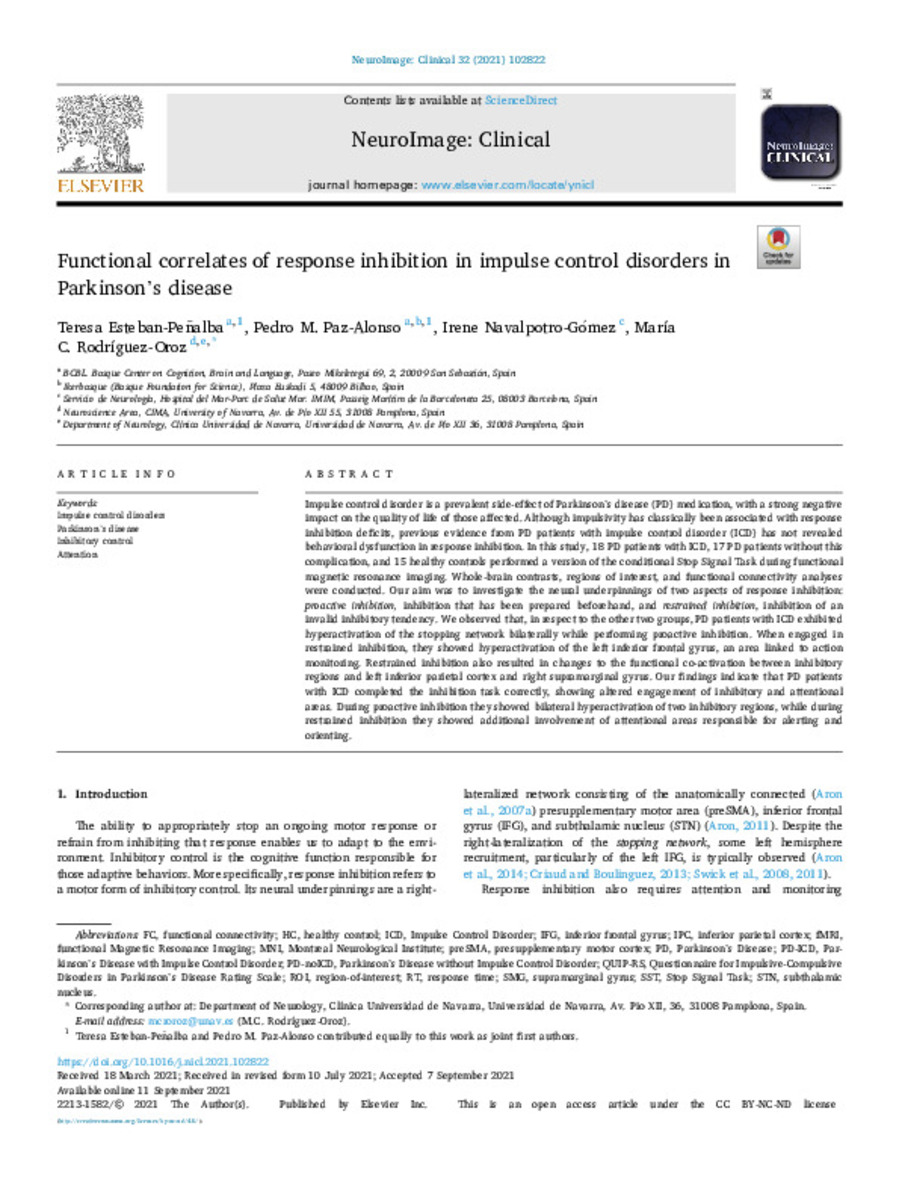Functional correlates of response inhibition in impulse control disorders in Parkinson’s disease
Palabras clave :
Impulse control disorders
Parkinson’s disease
Inhibitory control
Attention
Fecha de publicación :
2021
Nota:
This is an open access article under the CC BY-NC-ND license
Cita:
Esteban-Peñalba, T. (Teresa); Paz-Alonso, P. M. (Pedro M.); Rodriguez-Oroz, M.C. (María Cruz). "Functional correlates of response inhibition in impulse control disorders in Parkinson’s disease". NeuroImage Clinical. (32), 2021, 102822
Aparece en las colecciones:
Estadísticas e impacto
0 citas en

Los ítems de Dadun están protegidos por copyright, con todos los derechos reservados, a menos que se indique lo contrario.







